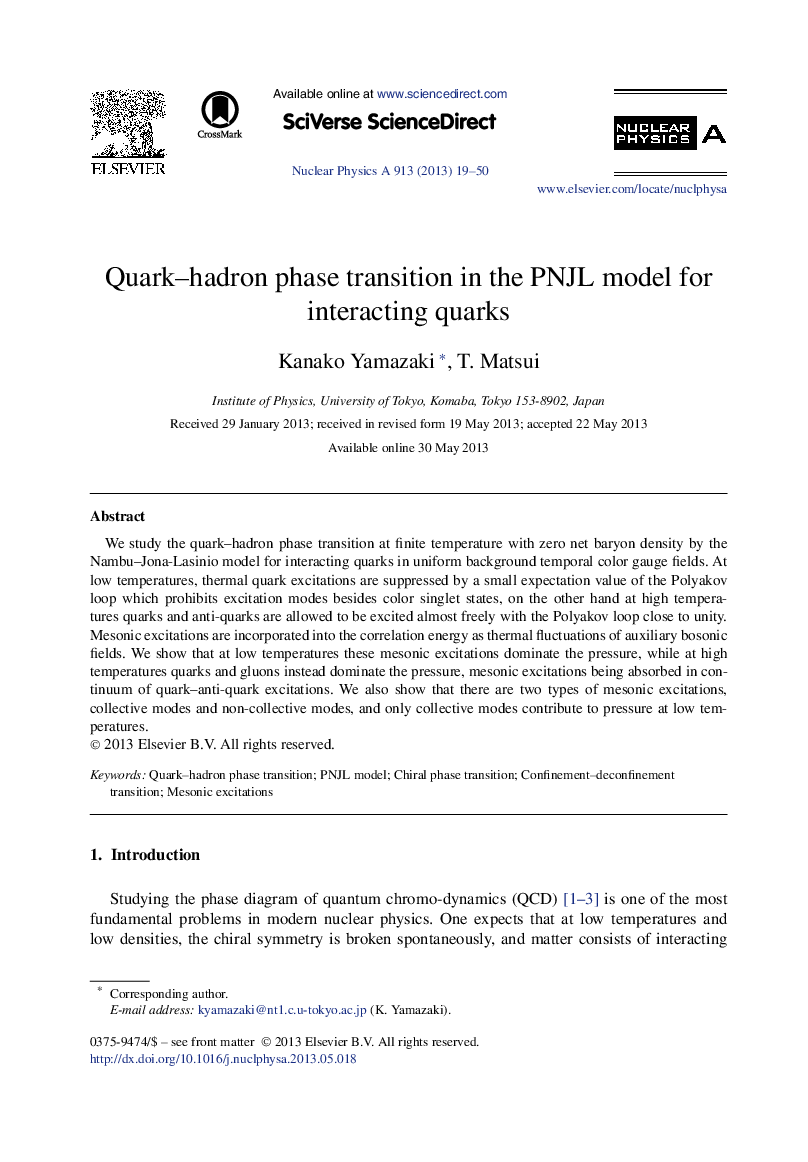| Article ID | Journal | Published Year | Pages | File Type |
|---|---|---|---|---|
| 1835897 | Nuclear Physics A | 2013 | 32 Pages |
We study the quark–hadron phase transition at finite temperature with zero net baryon density by the Nambu–Jona-Lasinio model for interacting quarks in uniform background temporal color gauge fields. At low temperatures, thermal quark excitations are suppressed by a small expectation value of the Polyakov loop which prohibits excitation modes besides color singlet states, on the other hand at high temperatures quarks and anti-quarks are allowed to be excited almost freely with the Polyakov loop close to unity. Mesonic excitations are incorporated into the correlation energy as thermal fluctuations of auxiliary bosonic fields. We show that at low temperatures these mesonic excitations dominate the pressure, while at high temperatures quarks and gluons instead dominate the pressure, mesonic excitations being absorbed in continuum of quark–anti-quark excitations. We also show that there are two types of mesonic excitations, collective modes and non-collective modes, and only collective modes contribute to pressure at low temperatures.
